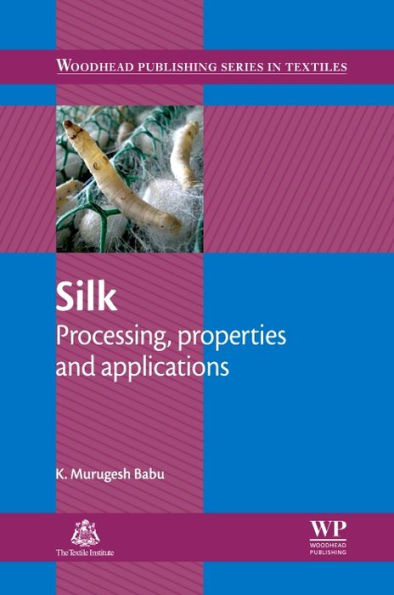Table of Contents
Woodhead Publishing Series in Textiles
Chapter 1: Introduction to silk and sericulture
Abstract:
1.1 Introduction
1.2 Mulberry silk species
1.3 Non-mulberry silk species
1.4 Types of mulberry and moriculture
1.5 The life cycle of the silkworm
1.6 Early age rearing of silkworms
1.7 Late age rearing of silkworms
1.8 Handling of spinning larvae and harvesting of cocoons
1.9 Diseases of silkworms
1.10 Physical characteristics of cocoons
1.11 Trends in sericulture
Chapter 2: Silk reeling and silk fabric manufacture
Abstract:
2.1 Introduction
2.2 Silk reeling
2.3 Types of silk reeling machines
2.4 Types of silk yarn
2.5 Key steps in silk fabric manufacture
2.6 Weaving of silk fabrics
2.7 Types of silk fabric
2.8 Spun silk production
2.9 Future trends in silk production
Chapter 3: Structural aspects of silk
Abstract:
3.1 Introduction
3.2 Composition of silk
3.3 Amino acid composition
3.4 Moisture regain
3.5 Microstructure of silk
3.6 Chemical structure of silk
3.7 Crystalline structure of silk
3.8 Optical properties of silk
Chapter 4: Mechanical and thermal properties of silk
Abstract:
4.1 Introduction
4.2 Tensile properties
4.3 visco-elastic behaviour
4.4 Dynamic mechanical behaviour
4.5 Thermal behaviour
Chapter 5: The dyeing of silk
Abstract:
5.1 Introduction
5.2 Types of dye used for silk
5.3 Factors affecting dyeing behaviour
5.4 Preparation of silk for dyeing: degumming
5.5 Bleaching of silk
5.6 Dyeing of silk with acid dyes
5.7 Dyeing of silk with reactive dyes
5.8 Dyeing with direct colours and natural dyes
Chapter 6: Developments in the processing and applications of silk
Abstract:
6.1 Introduction
6.2 Processing of silk fibroin
6.3 Silk non-wovens
6.4 Fluorescent silks
6.5 Biomedical applications of silk
6.6 Silk fibre-reinforced composites
6.7 Conclusions
Chapter 7: Spider silks and their applications
Abstract:
7.1 Introduction
7. 2 Types of spider silk
7.3 Chemical composition
7. 4 Amino acid composition and molecular structure of dragline silk
7. 5 General properties of spider silk
7.6 Tensile properties of spider silk
7. 7 Applications
Index



